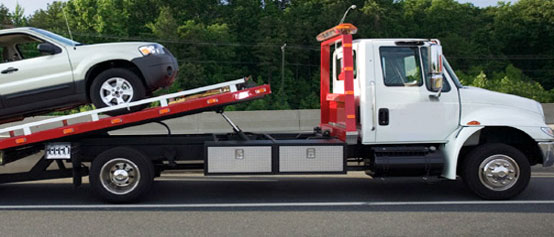Any prudent car owner in his car, in addition to a first aid kit, a spare wheel, a fire extinguisher, an emergency stop sign, also has a towing service cable. It is most relevant in winter, because it is in winter that the risk of various troubles on the roads increases. However, towing is not always possible, sometimes it is even prohibited by traffic rules. When is towing prohibited?
If all the rules are followed, towing service can begin. Before starting it, the drivers need to agree on the procedure for giving each other signals and the route of movement.
It should be borne in mind that when towing, it is prohibited to transport passengers inside the towed vehicle, as well as in the body of the towing truck, while when towing with partial loading of the car onto a platform or onto a special device, inside all vehicles, except for the cab of the towing vehicle.

The recommended speed during towing service is up to 40 km / h (in case of difficult weather conditions – up to 30 km / h). It is necessary to move with the included emergency signals on the towed vehicle, and turn signals are given by hand.
It should be borne in mind that in the case when the engine is turned off in the towed car, it becomes more difficult to brake, and during a turn the steering wheel can be locked. To reduce the force during the dash, the cable is fixed at an angle. Keep the rope taut.
If the cable looses, the speed must be set smoothly, otherwise the cable may break and damage the vehicle. Accelerate, brake and shift gears should also be smooth.
In the case of towing service in mountainous terrain, it is necessary to ascend at the same speed, without changing it during the ascent.
Towing service car with automatic transmission
Towing a car with an automatic transmission must be carried out with the engine running, the gear selector must be in the “N” position. However, such towing service is undesirable for long distances (over 50 km). Travel speed should be no more than 40 km / h.
If it is necessary to tow over long distances (especially in case of problems with the engine), it is necessary to load the towed car on a tow truck entirely or with drive wheels, since in this case there is a very high risk of breakage of the automatic transmission.
Towing service by a vehicle with automatic transmission is undesirable. However, in the case when there are no other options, the following rules should be followed:
- The mass of the towed vehicle must not exceed the mass of the towing vehicle.
- towing service should be carried out at a speed not exceeding 40 km / h.
- The automatic transmission should be in position “2” or “L”, but not in position “D”. Downshifting can result in additional unwanted loads.
- A hard clutch is more preferable, since the automatic transmission perceives trailers normally.
An all-wheel drive car can only be towed if the front or rear axle is raised. towing service with a hitch is completely undesirable; it is better to call a tow truck.
Towing on a rigid or flexible hitch should be carried out only with the driver at the wheel of the towed vehicle, except for cases when the design of the rigid hitch ensures that the towed vehicle follows the trajectory of the towing vehicle in straight-line motion.
2. When towing on a flexible or rigid hitch, it is prohibited to transport people in a towed bus, trolleybus and in the body of a towed truck, and when towing by partial loading, it is prohibited to find people in the cab or body of the towed vehicle, as well as in the body of the towing vehicle.
2.1. When towing, towing vehicles must be driven by drivers who have the right to drive vehicles for 2 years or more.
3. When towing on a flexible hitch, the distance between the towing and the towed vehicles must be within 4-6 m, and when towing on a rigid hitch – no more than 4 m. The flexible link must be marked in accordance with paragraph 9 of the General Provisions.
4. Towing is prohibited:
– vehicles with no steering control (towing by the partial loading method is allowed);
– two or more vehicles;
– vehicles with an inoperative braking system (systems that do not allow the driver to stop the vehicle or make a maneuver while driving even at a minimum speed are considered inoperative), if their actual mass is more than half of the actual mass of the towing vehicle. With a lower actual mass, towing of such vehicles is allowed only on a rigid hitch or by partial loading;
– two-wheeled motorcycles without a side trailer, as well as such motorcycles;
– in icy conditions on a flexible hitch.
